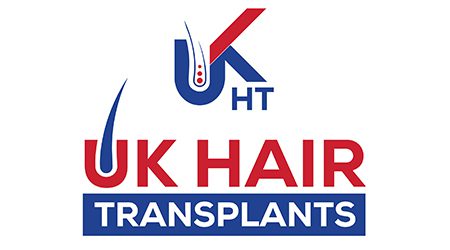Have you ever regarded your reflection and felt a pang of envy for those blessed with lush facial hair? Perhaps you’ve experienced patchiness in your beard or moustache, or you’ve struggled to grow any facial hair at all. The good news is, that you’re not alone, and modern cosmetic procedures offer solutions that could change everything. Enter the world of facial hair transplants. But how do you know if you’re a suitable candidate for this transformative procedure? That’s where UK-Hair Transplants comes into play, helping individuals like you achieve their aesthetic goals.
In this article, we’ll guide you through the essential criteria to determine your eligibility for a facial hair transplant, and what options are available for you. Whether you’re looking to refine your appearance or boost your confidence, understanding your choices is the first step toward making an informed decision.
What are the eligibility criteria for a facial hair transplant?
To determine if you are a good candidate for a facial hair transplant, one of the primary criteria is having sufficient donor hair. Typically, the hair is harvested from the back or sides of the scalp, where hair growth is usually denser and more consistent. This donor area must have enough healthy hair follicles to ensure a successful transplant without compromising the appearance of the donor site.
Another crucial factor is the overall health of the individual. Candidates should be in good general health, as certain medical conditions can affect the healing process and the success of the transplant. Conditions such as uncontrolled diabetes, blood clotting disorders, or autoimmune diseases may disqualify a person from undergoing the procedure.
Age can also play a role in determining eligibility. While there is no strict age limit, younger candidates may be advised to wait until their facial hair growth patterns have fully developed. This ensures that the transplant results will be more predictable and natural-looking.
Skin type and hair characteristics are also considered. Different skin types and hair textures can affect the outcome of the transplant. For instance, individuals with curly or wavy hair may achieve more natural-looking results compared to those with very straight hair. Additionally, the colour contrast between the hair and skin can influence the aesthetic outcome.
Candidates should have realistic expectations about the results. A thorough consultation with a qualified specialist will help set achievable goals and provide a clear understanding of what the procedure can and cannot accomplish. This helps ensure that the candidate is mentally and emotionally prepared for the outcomes.
Lastly, the absence of active skin conditions in the transplant area is essential. Conditions such as severe acne, dermatitis, or psoriasis can interfere with the healing process and the overall success of the transplant. Any skin issues must be treated and resolved before considering a facial hair transplant.
How does the procedure work?
Follicular Unit Extraction (FUE) is a popular method not only for scalp hair transplants but also for enhancing facial hair such as beards, moustaches, goatees, and sideburns. This minimally invasive procedure targets the restoration of hair density on various parts of your face. The duration of the procedure can vary from three to nine hours, depending on the specific area being treated and the amount of hair required. For instance, a goatee might need up to 1,500 hairs, while a full beard could necessitate as many as 4,000 hairs.
During the procedure, your surgeon identifies the ‘stable zone area’—typically located at the side or back of the head—which serves as the donor site for the facial hair transplant. For beard transplants, finer hair from the sides of the head is often preferred. If you are balding or completely bald, body hair from areas like the chest can also be used as a donor area.
One of the advantages of an FUE beard transplant is that it’s a walk-in, walk-out procedure that relies only on local anaesthetic, ensuring minimal downtime. The surgeon carefully extracts each hair follicle one at a time using specialised tools called ‘punches’, which cut around the follicles. The size of these tools varies based on the needed follicle size—the finer the hair, the smaller the punch used. This extraction process is performed with utmost discretion, making it nearly unnoticeable.
Once the extraction phase is completed, local anaesthetic is administered to the target facial areas. The surgeon then meticulously implants the harvested hairs, one follicle at a time, ensuring they are placed at the correct angle to achieve the highest density and most natural-looking results. This attention to detail is crucial for the success of the procedure and your overall satisfaction with the outcome.
How long is the recovery process?
The recovery process following a facial hair transplant can vary depending on individual circumstances, but generally, it is relatively straightforward. In the first few days post-procedure, patients might experience some swelling, redness, and minor discomfort in the treated area. These symptoms are typically mild and can be managed with prescribed medications and proper aftercare.
Within the first week, tiny scabs will form around the transplanted hair follicles. It is crucial to avoid picking or scratching these scabs to prevent infection and ensure optimal healing. Most patients can return to their normal daily activities within a few days, although it is advisable to avoid strenuous activities and direct sun exposure during this initial recovery phase.
By the second week, the scabs usually begin to fall off naturally. At this point, the transplanted hairs might start to shed, which is a normal part of the hair growth cycle known as ‘shock loss’. This should not be a cause for concern, as the hair follicles are still intact and will eventually produce new hair growth.
Around the three to four-month mark, patients typically start to notice new hair growth in the transplanted area. This growth will continue to improve over the following months. Full results from a facial hair transplant can usually be seen within 9 to 12 months, as the hair continues to mature and thicken.
Throughout the recovery process, it is essential to follow the aftercare instructions provided by your surgeon. This may include using specific shampoos, avoiding certain skincare products, and attending follow-up appointments to monitor progress. Adhering to these guidelines will help ensure the best possible outcome from your facial hair transplant.
Consultation Process: What Questions to Ask
Embarking on the journey of a facial hair transplant involves several steps, but the consultation stands out as a pivotal point. During your consultation, it’s essential to come prepared with questions that will help you understand the process thoroughly, address any concerns, and set realistic expectations.
- What are my options for facial hair transplantation?
Understand the different techniques available. Your specialist can explain methods like Follicular Unit Extraction (FUE) or Follicular Unit Transplantation (FUT) and help you choose the one that suits your needs best.
- Am I a good candidate for the procedure?
Discuss whether your skin type, hair type, and overall health make you an ideal candidate for the transplant. This is also the time to review your medical history and any potential contraindications.
- What will the procedure involve?
Ensure you have a clear understanding of what will happen during the surgery. Ask for a step-by-step explanation so you know what to expect on the day of the procedure.
- How many grafts will I need?
The number of grafts required can vary significantly from person to person. Your specialist will assess your goals and the areas you wish to cover to give you an accurate estimate.
- What will the recovery process be like?
Gain insights into the recovery timeline, including any downtime, post-operative care, and when you can expect to see results. Understanding these aspects can help you plan accordingly.
- Are there any risks or potential complications?
While facial hair transplants are generally safe, it’s crucial to be aware of any risks or potential complications that could arise. Your specialist should provide a comprehensive overview of these factors.
- What results can I realistically expect?
Discussing the expected outcomes is vital. Your consultant should provide you with a realistic picture of what can be achieved, potentially supported by before-and-after photos of previous patients.
- How much does the procedure cost?
Pricing is an essential factor when considering a facial hair transplant. During your consultation, you’ll be able to receive a detailed breakdown of the costs involved, including any financing options that might be available.
By asking these questions, you ensure that you are well-informed and comfortable with your decision. Remember, the consultation is not just about assessing your suitability for the procedure but also about ensuring you feel confident and supported throughout the journey.
Choosing the Right Clinic in the UK: UK – Hair Transplant
When considering a facial hair transplant, finding the right clinic is essential, and UK-Hair Transplants stands out as a top choice. Offering free consultations, the clinic ensures that potential patients receive expert advice to determine their suitability for the procedure. Furthermore, the clinic boasts two of the UK’s and Europe’s most sought-after surgeons, specialising in facial hair transplants, ensuring high standards of care and exceptional results.
FUE (Follicular Unit Extraction) is the leading technique employed by the specialists at UK-Hair Transplants, known for its precision and long-lasting results. With a considerable proportion of the procedures being FUE transplants, patients can feel confident in the clinic’s expertise. Additionally, UK-Hair Transplants provides comprehensive post-operative care, supporting you through the recovery process for optimal outcomes.
Choosing UK-Hair Transplants means accessing state-of-the-art facilities and experienced professionals dedicated to helping you achieve your desired look. By booking a free assessment, you can take the first step towards enhancing your facial hair with confidence and support from some of the best in the industry.
Curious to learn more about your options for a facial hair transplant? Visit UK Hair Transplants Treatments to explore a range of services and discover how you can achieve your desired look. Take the first step towards your confidence boost today!


